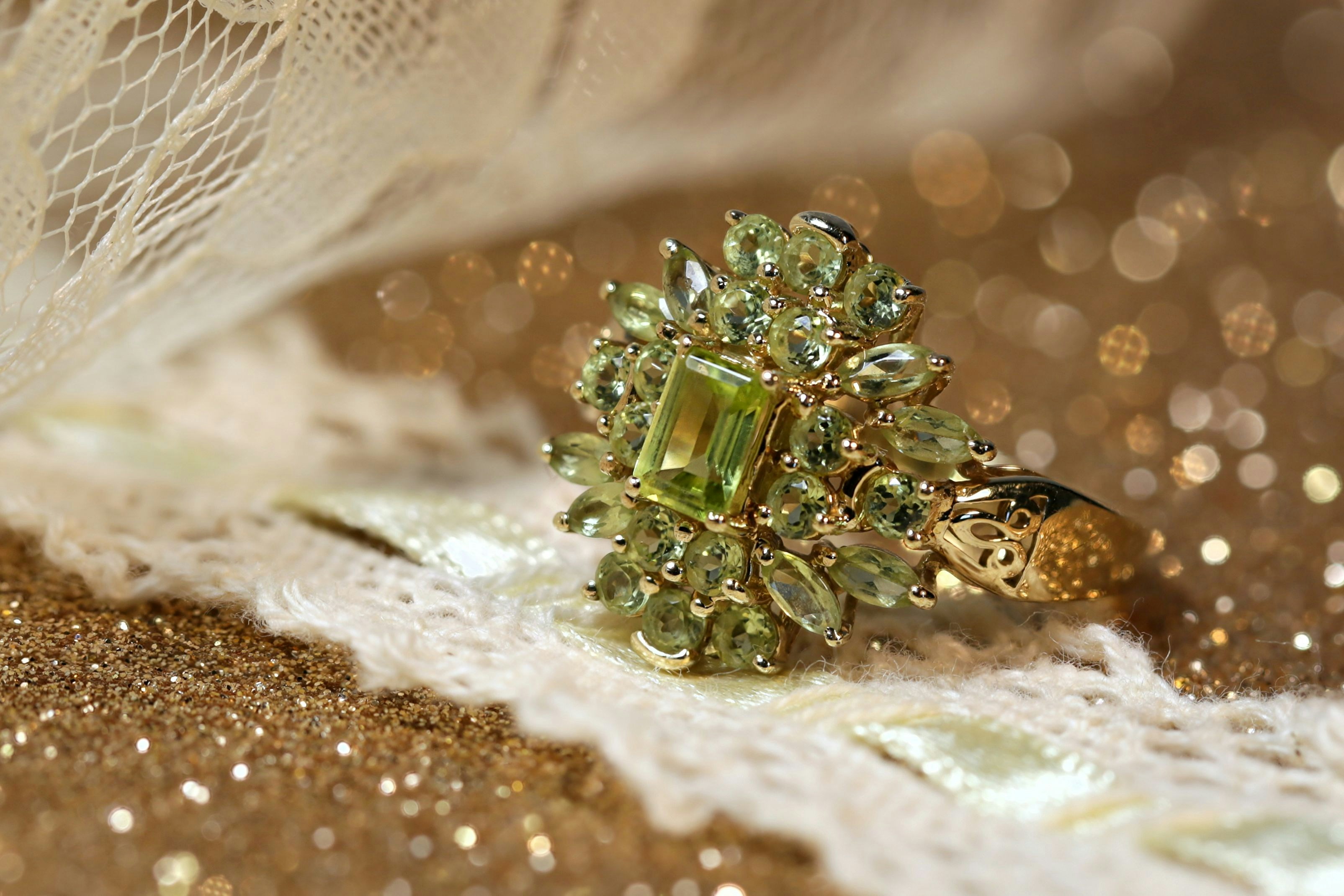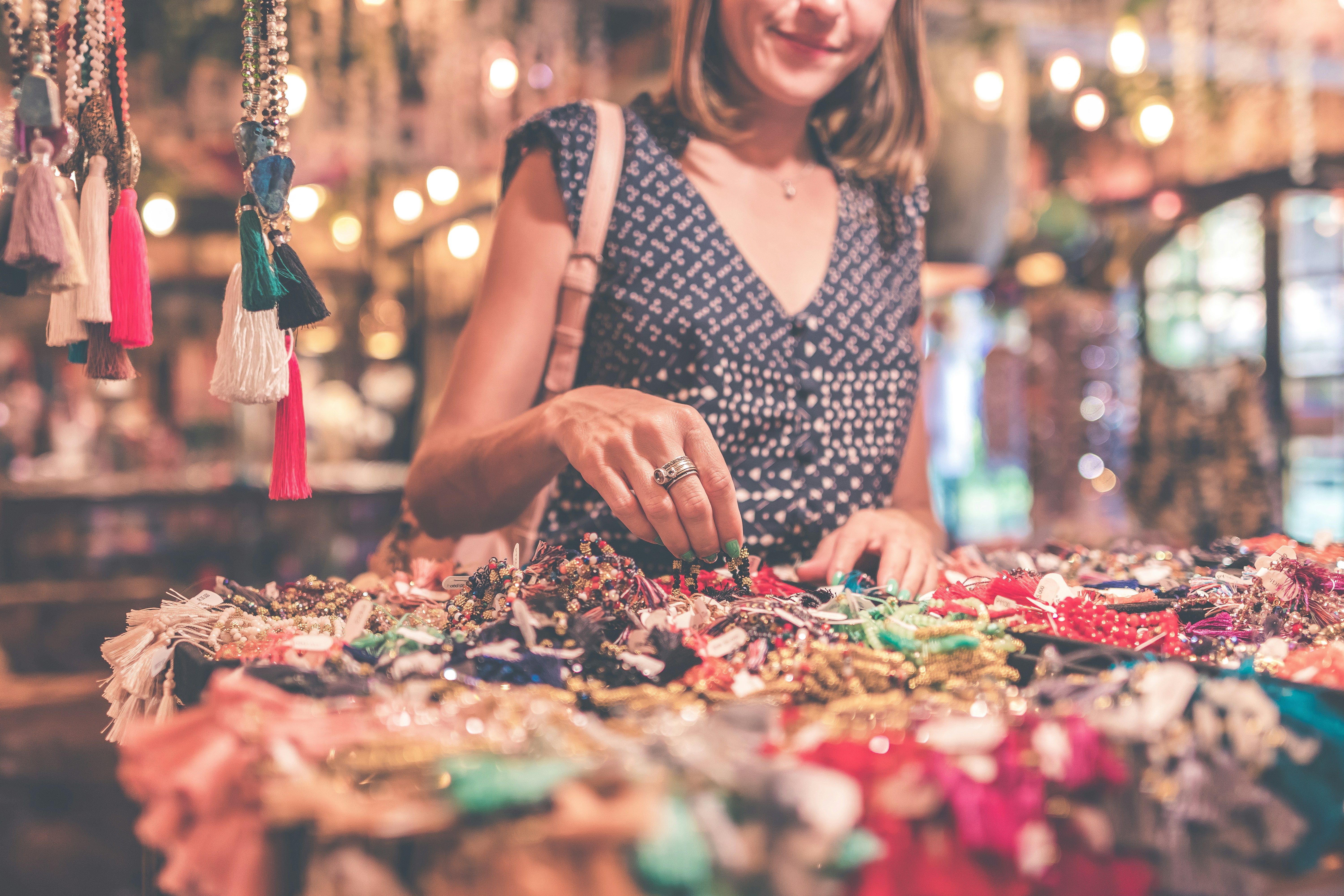Vintage Rhinestone Jewelry History And Designers
Alexander Kellerson

Introduction to Vintage Rhinestone Jewelry
Vintage rhinestone jewelry is a cherished collectible, admired for its sparkling beauty and timeless elegance. This type of jewelry, often crafted with imitation diamonds, became popular for its affordability and dazzling appearance. Collectors and fashion enthusiasts alike are drawn to vintage rhinestone pieces for their intricate designs and historical significance.
Rhinestones, also known as paste or diamantes, are glass or crystal stones that are cut to resemble precious gemstones. Their affordability made high-fashion jewelry accessible to a wider audience during the early to mid-20th century. Today, vintage rhinestone jewelry is sought after for its unique charm and the craftsmanship that went into creating each piece.
The Origins of Rhinestone Jewelry
The history of rhinestone jewelry dates back to the 18th century when Georg Friedrich Strass, a French jeweler, developed a technique to mimic the look of diamonds using glass. These early rhinestones, often referred to as 'strass,' were initially used in costume jewelry and became popular in European fashion.
By the 19th century, rhinestone jewelry had gained popularity in the United States. The advent of mass production techniques allowed for the widespread availability of rhinestones, making them a staple in costume jewelry. Their brilliance and versatility made them a favorite among fashion-conscious individuals seeking affordable glamour.
The Golden Age of Rhinestone Jewelry
The mid-20th century, particularly the 1930s to 1950s, is considered the golden age of rhinestone jewelry. This era saw the rise of glamorous, Hollywood-inspired designs that featured rhinestones prominently. Jewelry designers created stunning pieces that adorned movie stars and were featured in high-fashion magazines.
During this period, rhinestone jewelry was synonymous with elegance and sophistication. Pieces often included elaborate brooches, necklaces, earrings, and bracelets, all designed to catch the light and sparkle with brilliance. The popularity of rhinestone jewelry during this time was a testament to its appeal and the desire for affordable luxury.
Influential Designers in Rhinestone Jewelry
Several designers played pivotal roles in the history of rhinestone jewelry. Coco Chanel, for example, revolutionized costume jewelry by incorporating rhinestones into her designs, making high fashion accessible to a broader audience. Her pieces were known for their elegance and innovative use of materials.
Other notable designers include Trifari, Weiss, and Eisenberg, who each brought their unique styles to rhinestone jewelry. Trifari's pieces were known for their intricate detailing, while Weiss was famous for its bold, colorful designs. Eisenberg's jewelry, often adorned with rhinestones, was celebrated for its craftsmanship and timeless appeal.
Popular Styles and Trends in Vintage Rhinestone Jewelry
Vintage rhinestone jewelry encompasses a wide range of styles and trends. Art Deco pieces from the 1920s and 1930s feature geometric shapes and bold designs, while mid-century pieces often reflect the glamour of Hollywood with their elaborate settings and sparkling stones. Each era brought its unique flair to rhinestone jewelry.
In addition to style variations, color played a significant role in rhinestone jewelry trends. Clear rhinestones were always popular, but colored rhinestones in shades of blue, red, green, and amber added a vibrant touch to many designs. The use of colored stones allowed designers to create eye-catching pieces that stood out in any collection.
Materials and Techniques Used in Rhinestone Jewelry
Rhinestone jewelry is primarily made from glass or crystal stones that are cut to mimic the appearance of diamonds and other precious gemstones. These stones are often set in metal bases, which can be made from a variety of materials including silver, gold, and base metals like brass and copper.
Techniques used in the creation of rhinestone jewelry include hand-setting, where each stone is individually placed into its setting, and mass production methods like mold casting. The quality of vintage rhinestone jewelry often reflects the craftsmanship and attention to detail that went into its creation, making it highly valued by collectors.
Collecting and Caring for Vintage Rhinestone Jewelry
Collecting vintage rhinestone jewelry can be a rewarding hobby. When starting a collection, it's important to look for pieces that are well-made and in good condition. Check for missing stones, secure settings, and minimal wear on the metal. Provenance and designer marks can also add value to a piece.
Caring for vintage rhinestone jewelry involves regular cleaning and proper storage. Use a soft cloth to gently clean the stones and settings, avoiding harsh chemicals that can damage the materials. Store your pieces in a cool, dry place, ideally in individual pouches or compartments to prevent scratching and tangling.
Identifying Authentic Vintage Rhinestone Pieces
Identifying authentic vintage rhinestone jewelry requires attention to detail. Look for signs of age, such as patina on the metal and slight wear on the stones. Vintage pieces are often heavier and more substantial than modern reproductions, reflecting the quality of materials and craftsmanship.
Designer marks and signatures can also help verify authenticity. Many vintage rhinestone pieces were signed by their makers, including well-known names like Trifari, Weiss, and Eisenberg. These marks can be found on the back of brooches, inside bracelet clasps, or on the underside of necklaces.
The Legacy of Rhinestone Jewelry in Modern Fashion
Rhinestone jewelry continues to influence modern fashion, with many contemporary designers drawing inspiration from vintage styles. The timeless appeal of rhinestones lies in their ability to add sparkle and elegance to any outfit, making them a popular choice for both everyday wear and special occasions.
Modern interpretations of rhinestone jewelry often blend classic designs with contemporary trends. This fusion creates pieces that are both nostalgic and current, appealing to a new generation of jewelry enthusiasts who appreciate the glamour and history of rhinestones.
Where to Buy Vintage Rhinestone Jewelry
Vintage rhinestone jewelry can be found in a variety of places, including antique shops, online marketplaces, and estate sales. When purchasing online, be sure to buy from reputable sellers who provide detailed descriptions and clear photos of their items. Auctions and specialized vintage jewelry stores are also excellent sources for finding unique pieces.
When shopping for vintage rhinestone jewelry, it's important to research and compare prices. Understanding the value of different designers and styles can help you make informed decisions and find the best deals. Whether you're a seasoned collector or new to vintage jewelry, there's a treasure trove of rhinestone pieces waiting to be discovered.
Conclusion: The Timeless Appeal of Rhinestone Jewelry
The enduring charm of vintage rhinestone jewelry lies in its ability to capture the elegance and glamour of bygone eras. These pieces, with their intricate designs and sparkling stones, continue to captivate collectors and fashion enthusiasts alike. As both a statement of style and a piece of history, vintage rhinestone jewelry holds a special place in the world of accessories.
Whether you're drawn to the art deco designs of the 1920s or the Hollywood glamour of the mid-20th century, there's a piece of rhinestone jewelry that can add a touch of vintage charm to your collection. By appreciating and preserving these treasures, we ensure that the legacy of rhinestone jewelry will continue to shine for generations to come.





